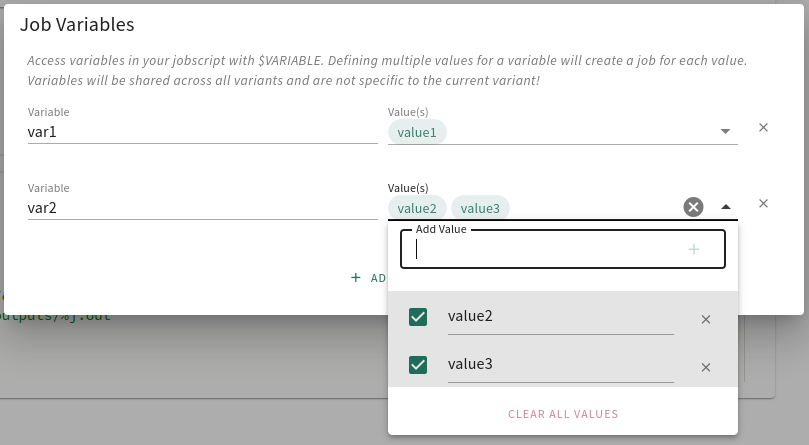Job configurations are powerful wrappers around your jobscript that provide you with extended control over your job as well as features like parameter substitution.
Visit the CONFIGURATIONS tab and click NEW CONFIGURATION to create an empty configuration. As your first step, a few general options must be specified:
- Configuration Name: The name of the configuration (not the job).
- Iterations: Specifies how often your job should be executed when submitting this configuration. This is helpful for running a job multiple times for statistical analysis.
- Share with Project: Select projects that should have access to this configuration. See Projects for more information.
- Measurement Interval: Interval at which the job is monitored in seconds. The current minimum is 5 seconds.
- Enable general monitoring: Enables/disables monitoring for the configuration
- Enable monitoring hardware performance counters: Enables/disables monitoring via hardware performance counters for low level metrics.
Each configuration is assigned a unique ID that can be used to submit jobs via the API as part of a Continuous Integration setup.

Job scripts in xbat are similar to your regular Slurm job script. The most important #SBATCH directives are fixed at the top of your jobscript and cannot be removed. No values are required for --job-name and --nodelist - a job name will be autogenerated if none is given and the nodelist is determined by the scheduler. You may add your own Slurm directives below them - check the Slurm Documentation for more information. Details about the partitions and nodes of your cluster can be viewed by clicking the PARTITIONS & NODES button above the job script editor.

Job variants allow you to run different version of the same job script with different parameters. Variants can be added by clicking the ADD VARIANT button which will create a copy of the currently selected variant. You can define custom names for each variant for better identification.
You can define job variables by clicking the Job Variables button above the job script editor. They will be provided to your job as environment variables. Variables can be used in the job script by using the syntax $VARIABLE. Variables can have a single or multiple values. If multiple values are provided, a job will be created for each value.
